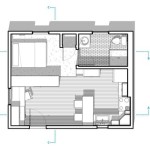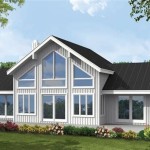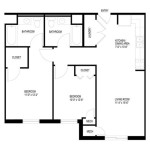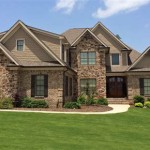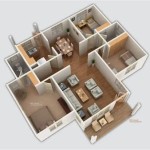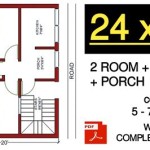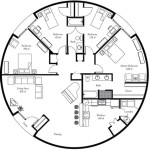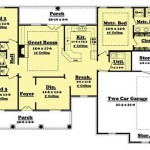House Plans For Lake Homes: Designing Your Lakeside Retreat
The allure of lakeside living is undeniable. The tranquility of the water, the opportunity for recreation, and the stunning natural beauty all contribute to a desirable lifestyle. But realizing this dream requires careful planning, especially when it comes to the design of the lake home itself. Choosing the right house plan is crucial to maximizing the benefits of the waterfront location and creating a comfortable and functional living space. This article explores key considerations when selecting house plans for lake homes, focusing on design elements that enhance the lakeside experience and address the specific challenges of building near water.
Selecting the ideal house plan often involves balancing aesthetic preferences with practical needs. The architectural style should complement the surrounding landscape, while the layout should optimize views and access to the lake. Consideration must also be given to local building codes, environmental regulations, and the specific characteristics of the building site. Factors such as soil type, slope, and water table level can significantly impact foundation design and overall construction costs.
Optimizing Views and Natural Light
One of the primary goals when designing a lake home is to maximize the views of the water. This can be achieved through strategic placement of windows, doors, and outdoor living spaces. Large expanses of glass, such as picture windows and sliding glass doors, can bring the beauty of the lake indoors. Floor-to-ceiling windows, often used in great rooms and master bedrooms, provide panoramic views and flood the interior with natural light. However, it is important to consider the orientation of the house to minimize glare and heat gain, particularly on west-facing facades. Solar control strategies, such as overhangs, awnings, and energy-efficient glazing, can help mitigate these issues.
The placement of outdoor living spaces, such as decks, patios, and balconies, is equally important. These areas provide opportunities for relaxation, entertainment, and enjoying the lakeside environment. Decks and patios should be strategically positioned to capture the best views and offer protection from the elements. Covered porches and screened-in areas provide shade and insect protection, extending the usability of outdoor spaces. Multilevel decks can create distinct zones for dining, lounging, and grilling, enhancing the functionality of the outdoor living area. Consideration should also be given to the proximity of outdoor spaces to indoor living areas, facilitating seamless transitions between the two.
Beyond visual connections, the house plan should also consider the path of natural light throughout the day. Strategic window placement can bring sunlight into different areas of the house at different times, creating a dynamic and inviting interior. Skylights and clerestory windows can introduce natural light into interior spaces that might otherwise be dark. The use of light wells and reflective surfaces can further enhance the distribution of natural light throughout the home. The orientation of the house and the placement of interior walls should be carefully considered to avoid blocking natural light and creating dark corners.
Designing for Functionality and Lakeside Living
Lake homes often serve as gathering places for family and friends, requiring designs that accommodate both large groups and intimate gatherings. Open floor plans, which combine the kitchen, dining, and living areas, promote social interaction and create a sense of spaciousness. A large, well-equipped kitchen is essential for preparing meals for large groups, and ample counter space and storage are crucial. A breakfast bar or island can provide additional seating and workspace, while a walk-in pantry offers convenient storage for food and supplies. The dining area should be large enough to accommodate a large table, and the living area should provide comfortable seating for relaxation and conversation.
Mudrooms and entryways are particularly important in lake homes, providing a place to store wet and sandy gear before entering the main living areas. Durable flooring and easy-to-clean surfaces are essential in these areas. Ample storage, such as coat racks, shelves, and benches, helps to keep the entryway organized. A utility sink can be useful for cleaning muddy boots and equipment. The mudroom should be strategically located near the garage, driveway, or lakeside entrance to facilitate easy access.
Given the proximity to water, lake homes often require specialized storage for water sports equipment, such as kayaks, paddleboards, and fishing gear. A dedicated storage area, such as a garage or storage shed, can help to keep this equipment organized and protected from the elements. Racks and shelving can be used to store kayaks and paddleboards vertically, maximizing storage space. A boat dock or slip provides convenient access to the water and allows for easy storage of boats and other watercraft. The design of the dock should complement the architecture of the house and provide a safe and convenient place to dock and launch boats.
Addressing Environmental Considerations and Building Codes
Building near a lake requires careful attention to environmental regulations and building codes. Many jurisdictions have strict regulations regarding setbacks from the water's edge, vegetation removal, and stormwater management. It is essential to consult with local authorities and obtain the necessary permits before beginning construction. Erosion control measures, such as silt fences and vegetative buffers, can help to prevent soil erosion and protect water quality during construction. Properly designed drainage systems can help to manage stormwater runoff and prevent flooding. Preserving existing vegetation can help to stabilize the shoreline and provide habitat for wildlife.
The foundation design is particularly important in lake homes, as the soil near the water table is often saturated and unstable. A well-designed foundation can prevent water infiltration and structural damage. Pier foundations, which elevate the house above the ground, are often used in areas with high water tables. These foundations allow for air circulation beneath the house, preventing moisture buildup and reducing the risk of mold and mildew. Concrete slab foundations are also common, but they require proper waterproofing to prevent water infiltration. The foundation design should also consider the potential for frost heave, which can occur in areas with cold winters. Proper insulation and drainage can help to prevent frost heave and protect the foundation.
Sustainable building practices are also important in lake home construction. Using energy-efficient windows, doors, and insulation can reduce energy consumption and lower utility bills. Installing a geothermal heating and cooling system can provide a sustainable and efficient way to heat and cool the house. Using recycled materials, such as reclaimed wood and recycled concrete, can reduce the environmental impact of construction. Implementing water conservation measures, such as low-flow toilets and showerheads, can help to conserve water. Designing the house to maximize natural light and ventilation can reduce the need for artificial lighting and air conditioning. These sustainable practices not only benefit the environment but also create a more comfortable and healthy living environment for the homeowners.
Moreover, choosing durable and weather-resistant materials is essential for lake homes. Exposure to water, sun, and wind can accelerate the deterioration of building materials. Selecting materials that can withstand these elements can help to reduce maintenance costs and extend the lifespan of the house. Cedar siding, for example, is naturally resistant to rot and insects. Composite decking materials are resistant to moisture damage and fading. Metal roofs are durable and long-lasting, and they can also reflect sunlight, reducing heat gain. Selecting high-quality paint and sealants can protect exterior surfaces from the elements. Regular maintenance, such as cleaning gutters and inspecting the roof, can help to prevent problems and extend the lifespan of the house.
In conclusion, designing a lake home requires careful consideration of a variety of factors, from optimizing views and natural light to addressing environmental regulations and building codes. By carefully selecting a house plan that meets the specific needs and challenges of the lakeside location, homeowners can create a comfortable, functional, and sustainable living space that maximizes the benefits of waterfront living. The collaboration of architects, engineers, and builders is paramount to ensure that the final product is not only aesthetically pleasing but also structurally sound and environmentally responsible.

Affordable And View Worthy Lake Homes Dfd House Plans Blog
:max_bytes(150000):strip_icc()/tucker-bayou_0_0-3621f516a7dd48f59abab6266c646381.jpg?strip=all)
Our 20 Best Lake House Plans For Your Vacation Home

Best Lake House Plans Waterfront Cottage Simple Designs

Lake House Plans Blog Homeplans Com

Best Lake House Plans Waterfront Cottage Simple Designs

4 Important Considerations For Lake Front Home Plans

Lake House Plans Specializing In Home Floor

The Perfect Lake House Designs For Your Lot Don Gardner Architects

Two Story Rustic Cottage Style House Plan 8786

Lake House Plans Blog Homeplans Com

